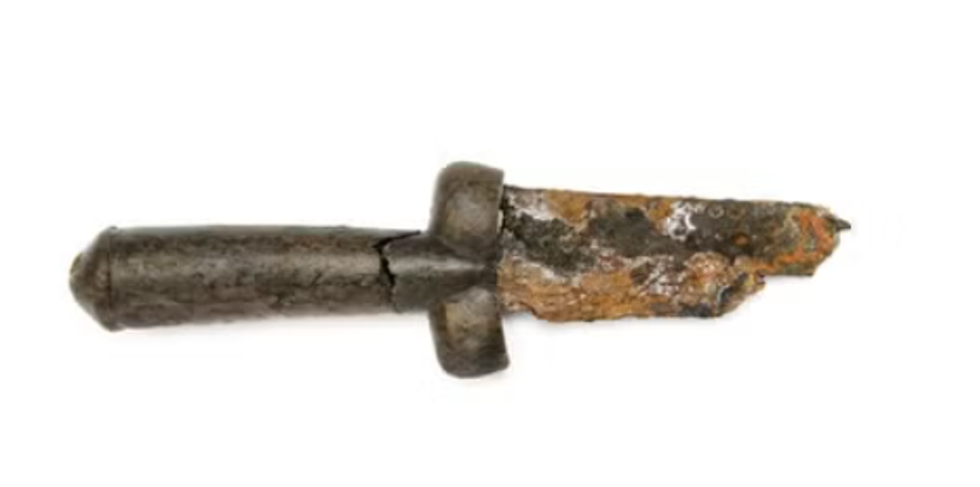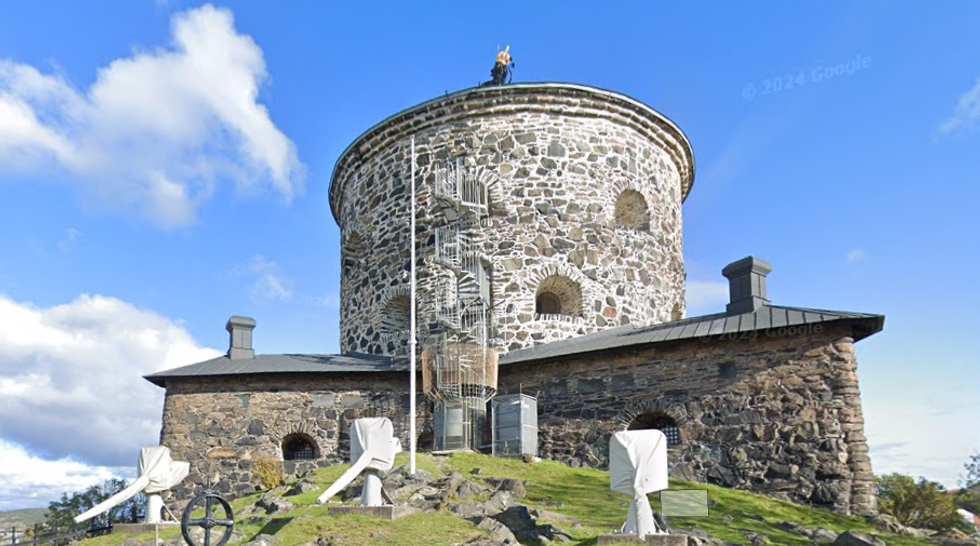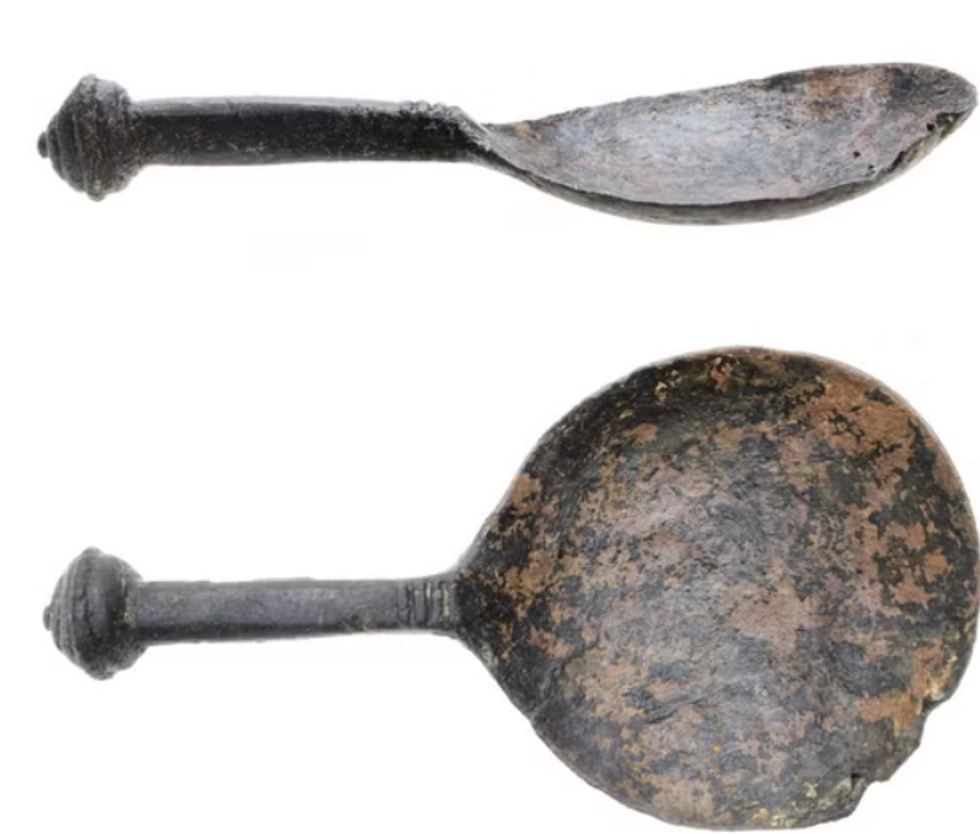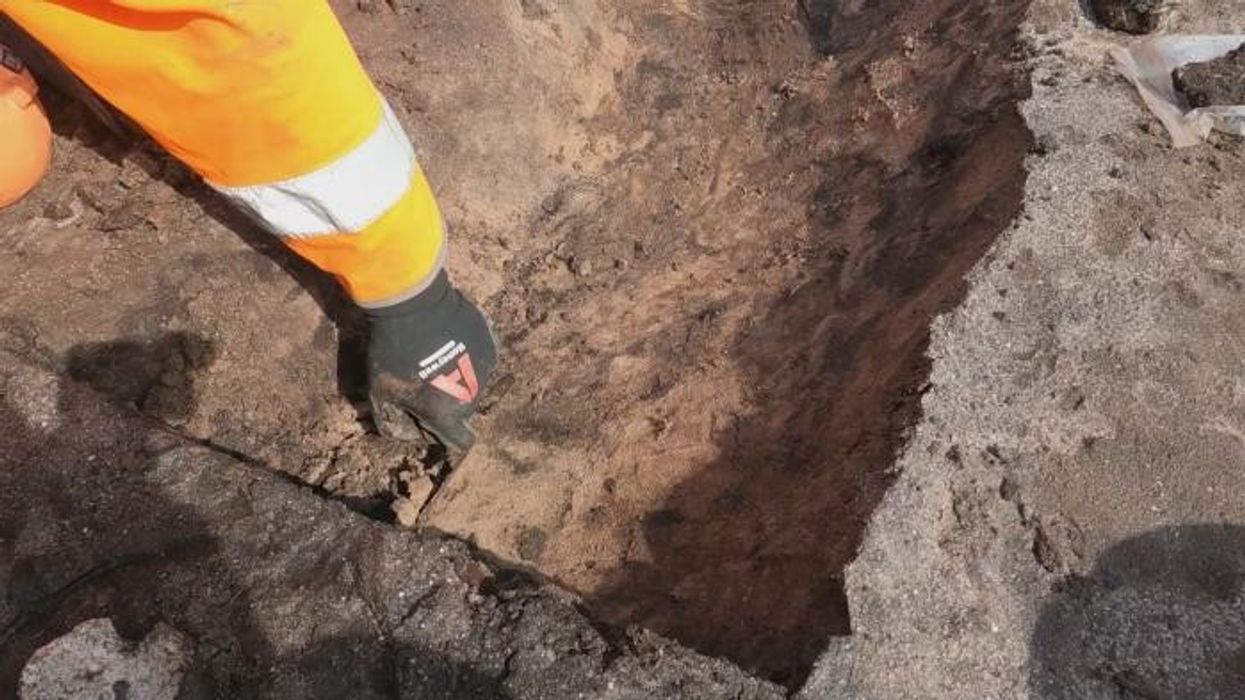Archaeology breakthrough as mysterious 'testicle dagger' found in medieval fort could damage armour thanks to unique shape

Crossbow arrows, cannonballs and cookware were also found during the excavation
Don't Miss
Most Read
Archaeologists have unearthed a peculiar 15th-century weapon dubbed the "testicle dagger" at a medieval Swedish fortress, which experts believe could have damaged opponents' armour with its unique design.
The unusual dagger, featuring testicle-shaped orbs, was discovered during excavation work at the Gullberg fortress in Gothenburg.
Researchers suggest the weapon's distinctive shape would have provided additional force when striking an opponent's armour.
While the dagger's iron blade is broken, its wooden hilt made of curly birch remains in excellent condition, according to archaeologists from the State Historical Museum.

Archaeologists have unearthed a peculiar 15th-century weapon dubbed the 'testicle dagger'
|Arkeologerna
The weapon features an overall phallic design with a penis-shaped pommel and two decorative orbs above the grip.
Experts suggest it was "worn by its owner in a manner befitting its suggestive shape".
They believe the unique pommel would have offered a better grip and additional force to damage an opponent's armour.
Other artefacts, including crossbow arrows, cannonballs and cookware were also found during the excavation.
LATEST DEVELOPMENTS:

Archaeological surveys have been underway at the fortress – renamed Westgötha Leijon – since 2014
|Archaeological surveys have been underway at the fortress – renamed Westgötha Leijon – since 2014 due to the need for a new train station along Sweden's Västlänken line.
Archaeologist Anders Altner from the State Historical Museum said: "We didn't think there would be as much left as there was."
The site has yielded numerous artefacts, including cannons, pistols, a limestone sundial, beer taps, a soup spoon, and a unique palm-sized perforated "sand spreader" canister used to sprinkle sand over new documents to soak up excess ink.
Excavations at the site have unearthed remnants of medieval houses, walls, a fortress gate, a well and a tower basement dating to between the 14th and 17th centuries.

Other artefacts, including crossbow arrows, cannonballs and cookware, were also found during the excavation
|Arkeologerna
Some parts of the construction used stone and brick, whilst others appear to be built of earthen ramparts and timber.
The early fortresses were likely built as a counter defence against the nearby Danish-Norwegian castles on Hisingen, and when the Danes controlled Älvsborg Castle.
Objects such as crossbow arrows and cannonballs "testify to troubled times", researchers say.











